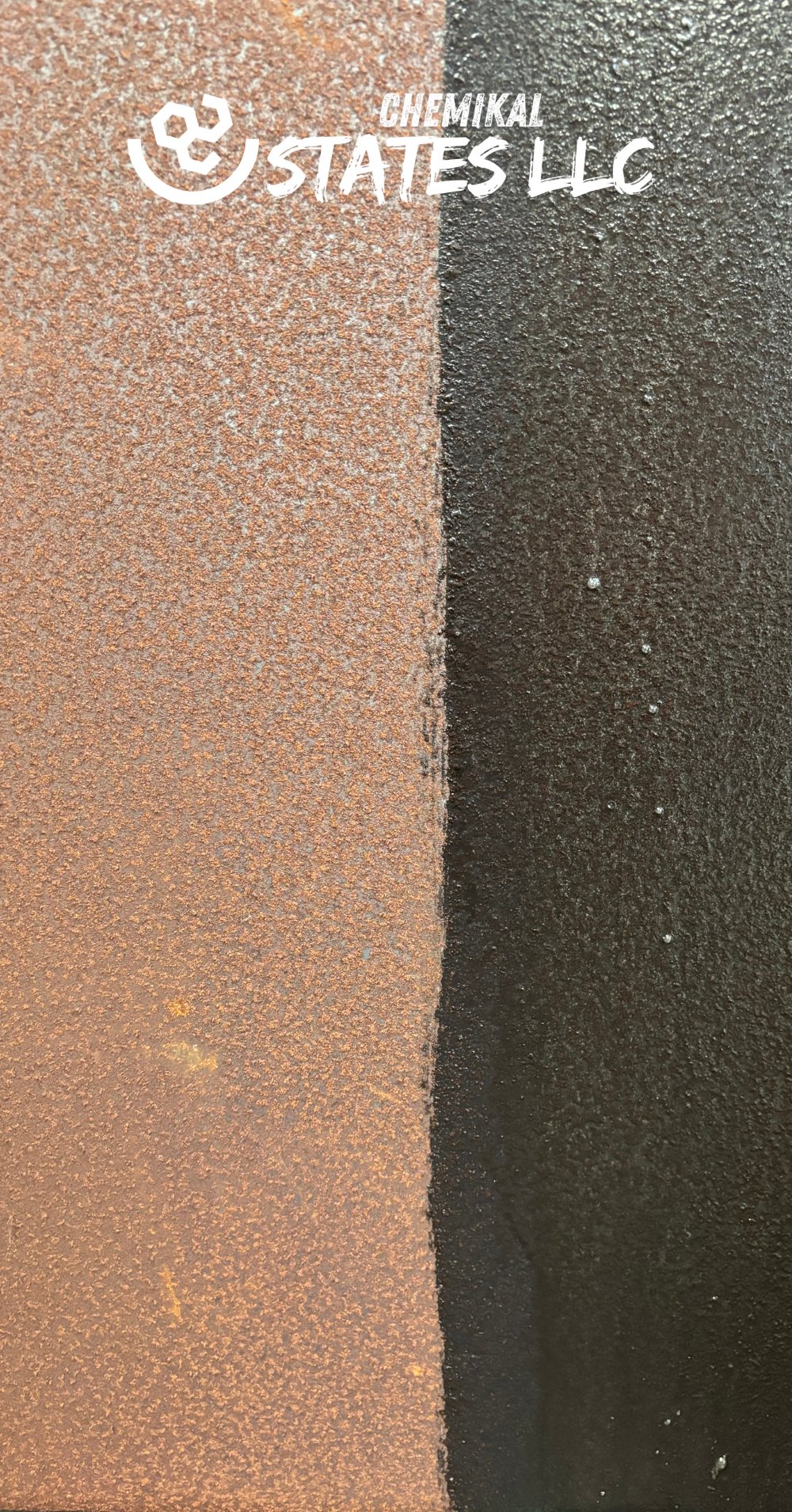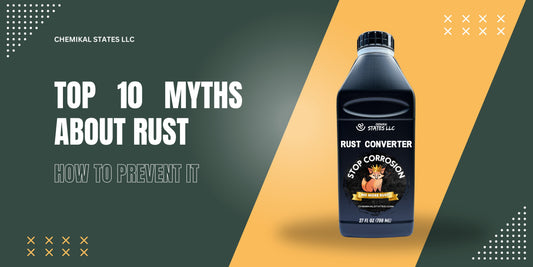
Best Rust Converter 2024: Complete Guide to Chemikal States for Ultimate Corrosion Protection
Share
Maintaining and protecting metals from corrosion is crucial for anyone looking to extend the life of their tools, machinery, vehicles, and metal structures. Proper care not only prevents costly repairs but also preserves the aesthetic and functional qualities of metal components. Here are some of the best practices in metal protection, including the use of the effective rust neutralizer, Chemikal States.
1. Regular Cleaning and Degreasing
- Regular cleaning of metal surfaces is the first step in preventing corrosion. Road salt, dirt, and other contaminants can accelerate the corrosion process. Degreasing the surface before applying any protective agents is crucial to ensure their adhesion and effectiveness. For this purpose, Chemikal States is ideal as it not only effectively neutralizes rust but also degreases the metal, preparing it for further processing.
2. Application of Protective Coatings
- Coatings such as paints, varnishes, or specialized anti-rust coatings provide a protective barrier that isolates the metal from the environment. Chemikal States creates a durable protective layer that effectively counteracts corrosion, allowing for the long-term preservation of the metal's condition.
3. Moisture and Water Exposure Control
- Moisture is one of the primary causes of corrosion. In areas where metal components are exposed to moisture, such as basements, garages, or industrial plants, use dehumidifiers or ventilation systems to maintain a low humidity level.
4. Use of Anodizing or Galvanizing
- Anodizing for aluminum and galvanizing for steel are processes that can significantly increase the metals' resistance to corrosion. These electrochemical methods create a protective layer that secures the metal against environmental exposure.
5. Regular Inspections and Maintenance
- Regular checks of the condition of metal components allow for the early detection of signs of corrosion. Early intervention using Chemikal States can prevent the further spread of rust and significantly reduce repair costs.
6. Use of Corrosion Inhibitors
- Corrosion inhibitors can be added to coolants, lubricants, or directly on metal surfaces. Chemikal States acts as a potent inhibitor that slows down the electrochemical reactions responsible for corrosion.
7. Selection of Appropriate Materials
- Where possible, prefer corrosion-resistant metals such as stainless steel, aluminum, or bronze. Although the initial cost may be higher, the long-term savings associated with less maintenance are significant.
8. Training and Education
- Training those responsible for maintenance and equipment handling in proper corrosion protection methods is as important as using the protective agents themselves. Education on the effective use of products like Chemikal States is crucial.
Implementing these practices will help not only protect metals from corrosion but also maintain their aesthetic appearance and functionality for years. Regular maintenance and proper protection are key to securing your metal investments. Chemikal States is a powerful tool in this fight, helping to save metal from the inevitable process of rusting.
FAQ: Best Rust Converter 2024 - Chemikal States for Ultimate Corrosion Protection
1. What is Chemikal States Rust Converter?
- Chemikal States Rust Converter is a highly effective product designed to stop rust in its tracks and convert it into a protective coating. It not only halts the corrosion process but also prepares the metal surface for painting or further treatment.
2. How does Chemikal States Rust Converter work?
- This product works by chemically reacting with the existing rust to form a stable, black protective barrier that prevents further oxidation. This barrier is also paintable, providing an excellent foundation for any finishing touches.
3. Is Chemikal States Rust Converter safe to use?
- Yes, Chemikal States Rust Converter is formulated to be safe for both professional and home use. It is non-toxic and environmentally friendly, making it a safe choice for indoor and outdoor applications.
4. Can Chemikal States Rust Converter be used on any type of metal?
- Chemikal States Rust Converter is ideal for use on iron and steel surfaces. It is not suitable for non-ferrous metals such as aluminum, copper, or stainless steel.
5. What are the application instructions for Chemikal States Rust Converter?
- To apply, remove loose rust and debris from the surface, then apply the converter evenly with a brush, roller, or spray. Allow it to dry for at least 24 hours before applying any paint or additional coatings.
6. Do I need to prime the surface after using Chemikal States Rust Converter?
- Priming is not necessary as Chemikal States provides a primed surface ready for painting. However, for maximum protection and aesthetic quality, applying a top coat of paint is recommended.
7. How long does Chemikal States Rust Converter take to cure?
- The product typically cures within 24 to 48 hours, depending on environmental conditions such as humidity and temperature.
8. Can Chemikal States Rust Converter be used in automotive applications?
- Absolutely, Chemikal States Rust Converter is excellent for automotive restoration projects, including car underbodies, frames, and wheel wells, where rust is common.
9. Where can I buy Chemikal States Rust Converter?
- Chemikal States Rust Converter is available in many hardware stores, automotive shops, and online retailers. Check your local suppliers or visit our website for purchasing options.
10. Why choose Chemikal States Rust Converter over other rust prevention products? - Chemikal States stands out due to its dual functionality. It not only converts rust but also primes the metal surface, saving time and costs on additional materials. Its effective formula also ensures long-lasting protection against further corrosion.
These FAQs aim to provide comprehensive information on how to effectively use Chemikal States Rust Converter for your rust conversion needs, offering both practical advice and insights into its unique benefits.










